Toy Story 2: 5 Disasters That Almost Killed The Classic
Toy Story 2 is one of the best sequels ever made. That is a miracle given all the obstacles that almost derailed it.
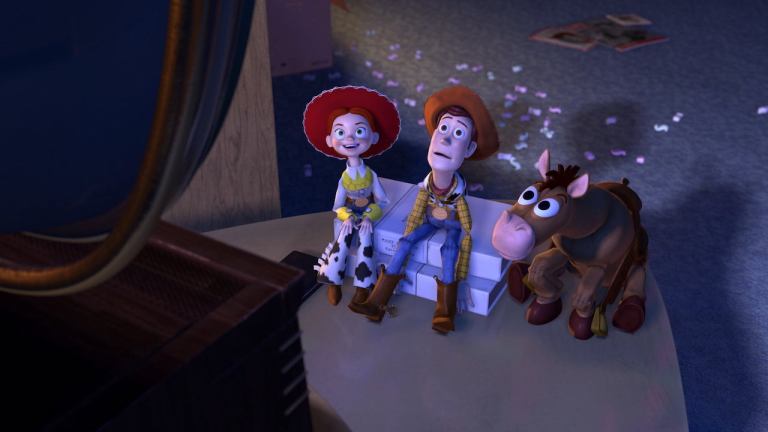
It’s the eve of Toy Story 2’s 20th anniversary, which makes it a fantastic moment to look at how we almost didn’t get this amazing sequel. If Toy Story 2 had failed, there’s a good chance Pixar, as a newly public company, would have gone down with it—and we certainly wouldn’t have gotten the two more recent and beloved additions to the series. But as frightening as a world without Pixar films might be, Toy Story 2’s incredible box office and critical success was no guarantee. The production was fraught with difficulties, from which Pixar learned some valuable lessons—and a great movie managed to come out on the other side.
Here are just some of the disasters the movie avoided.
Enjoy a FREE TRIAL of Disney+, courtesy of Den of Geek!
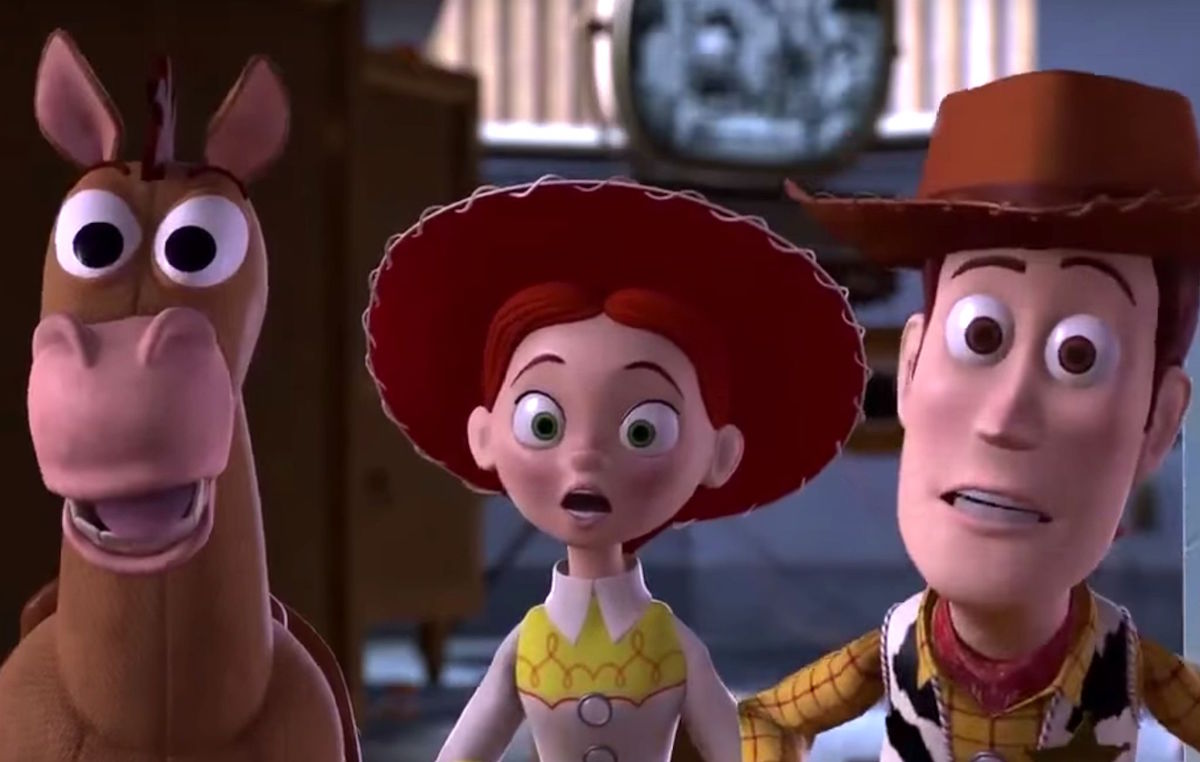
Direct to Video
While this might not have been a film killer, Toy Story 2 almost never made it to the big screen. In the 1990s, Disney was having tremendous success with its direct to VHS and DVD sequels. These films were intended to be lower budget than the big screen films, because Diseny viewed sequels as throwaway. Walt Disney Animation Studios almost never made sequels and were not wasted on the concept when Disney started churning them out for quick DTV profits; Disneytoon Studios did. These were created at a lower resolution and quality than required for the big screen, as well as with shoddier animation, writing, and songs because Disney didn’t really care how well they performed commercially. Due to Disney’s contract with Pixar at that time, Disney owned the rights to make a sequel a sequel to Toy Story, and the direct-to-video model made some sense, given the performance of other projects.
Disney originally planned to turn the sequel over to Disneytoon Studios, but Pixar was sure they’d do a better job. Unfortunately, aiming for a cheaply-done, low quality project was not a strategy Pixar had ever utilized before. The studio, which was also producing A Bug’s Life, ended up creating two teams: an A team for the big screen productions still in the works and a B team for the direct-to-video. But the culture at Pixar wasn’t one where creative teams were set up to accept mediocrity. The idea of intentionally aiming low wasn’t something that Pixar had ever done, and the “B team,” despite their budgetary requirements, didn’t want to settle for less. Pixar asked Disney to consider changing the film over to a theatrical release, and when Disney looked at the initial reels, they were impressed enough with the quality to give the change a greenlight. First hurdle: overcome.
Unfortunately for Pixar, Disney told the team that this would not count as one of the five films they’d contracted for distribution, despite its new big-scale appearance. (The conflicts between Disney and Pixar over Toy Story 2 continued to cause friction between the two companies until Disney eventually purchased Pixar.)
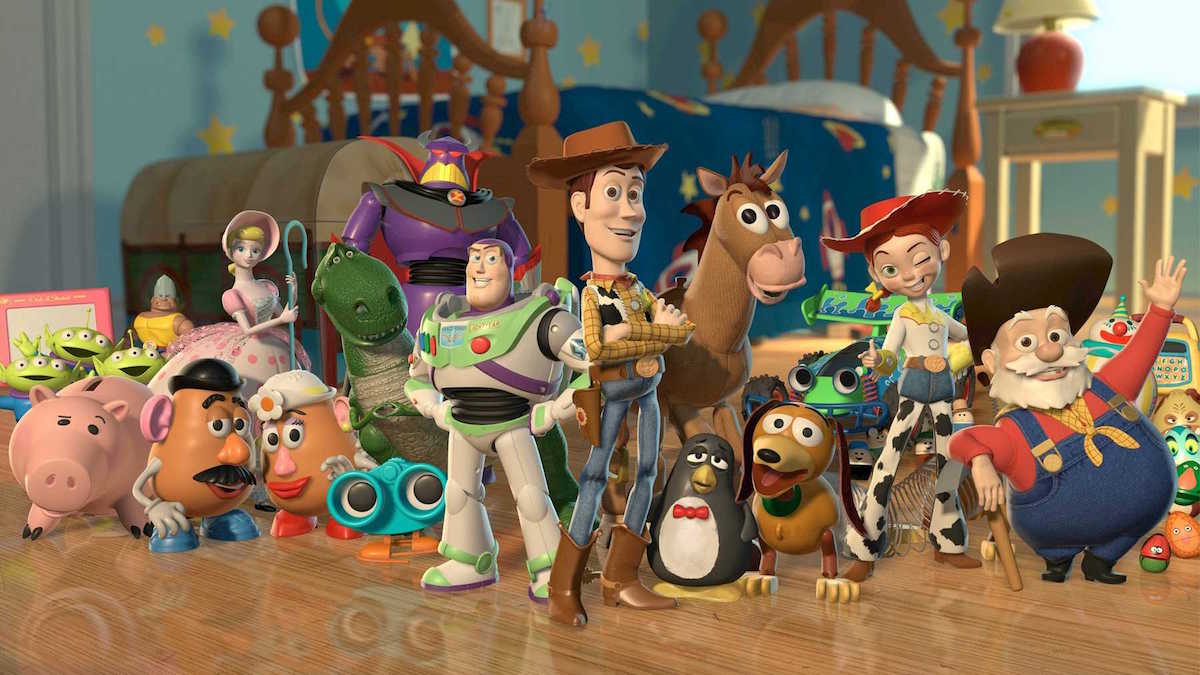
The B Team
Toy Story 2 had been imagined to be an easier project than the original, in large part because so much of the world and story building were already in place. The team took a concept that had already been developed—the idea of Woody encountering a toy collector had been created and then dropped from the original Toy Story—and added to it some themes that had been in development for other projects, such as the unproduced Tin Toy Christmas, in which a toy character was put into storage. Because John Lasseter and the creative team from the original Toy Story were busy working on A Bug’s Life, two first-time directors, one of whom was Ash Brannon, were given the responsibility of helming Toy Story 2.
read more: Tom Hanks on Saying Goodbye to Woody with Toy Story 4
However, the team never gelled. They requested help from Lasseter regularly, but the Pixar team continued to express confidence that they could handle it. It wasn’t until A Bug’s Life wrapped that Lasseter sat down to look at the production… and Toy Story 2 was a mess. Lasseter and his team felt the movie played flat and didn’t have the emotional pull it needed to be a huge success. Disney, however, saw the initial reels and thought it was good enough—and they required Pixar to meet the initial schedule.
With the deadline looming, Pixar brought in the original Toy Story team to take over direction of the film and to give the film the major overhaul they believed it needed. Lasseter became a director on the project, which had never been his intention. Brannon stayed on with the title of co-director, but Lee Unkrich, who had worked as an editor on Toy Story and A Bug’s Life. would get a life-alerting opportunity by being tapped to co-direct Toy Story 2 with Lasseter. (Unkrich’s work on Toy Story 2 paved the way for his future films, including Finding Nemo, Toy Story 3, and Coco.) Andrew Stanton, co-director on A Bug’s Life, was also brought on to help clean up the story.
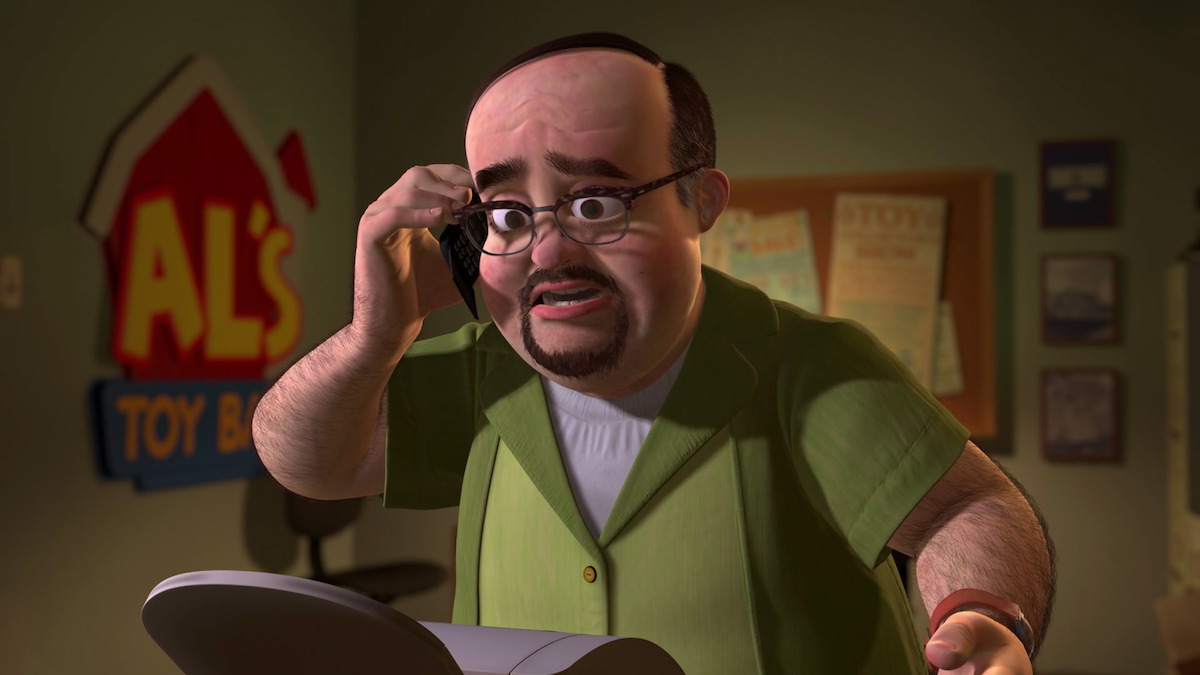
The Deletion
The most epic of the disasters that befell Toy Story 2 was a computer accident. Before the new team began to rework the film, they almost lost the film all together. During a routine cleaning out of file storage, an animator unintentionally hit a key-command that erased all sets in the system, including all of Toy Story 2. The process almost happened in slow motion: team member Oren Jacobs watched the event in real time as first Woody’s hat disappeared, then his boots, and then Woody himself. Jacobs rushed the systems team to pull the plug on the Toy Story 2 machine before the whole movie was erased, but it was too late: 90 percent of the film had been deleted.
At first, the team didn’t panic. They had backups, after all, and they’d only lose a half day’s work. But it was not to be: the backup system didn’t work correctly, and there was nothing there to restore. The film was literally gone.
Grab a FREE TRIAL of Disney+, on us, right here!
With the Disney deadline looming, the 11th hour solution was almost as accidental as the crisis itself. Galyn Susman, the supervising technical director, had been working from home after the birth of her second child. She had set up a backup program to get the Pixar files to her home computer, and it still delivered all those files on a weekly basis. The computer was retrieved—as in literally driven across the bay area to Pixar’s studios as if it were a world leader—and the film files were restored… for the most part. Jacobs has acknowledged that some of the files were never restored, but the film managed to flow so well without them that they went ahead.
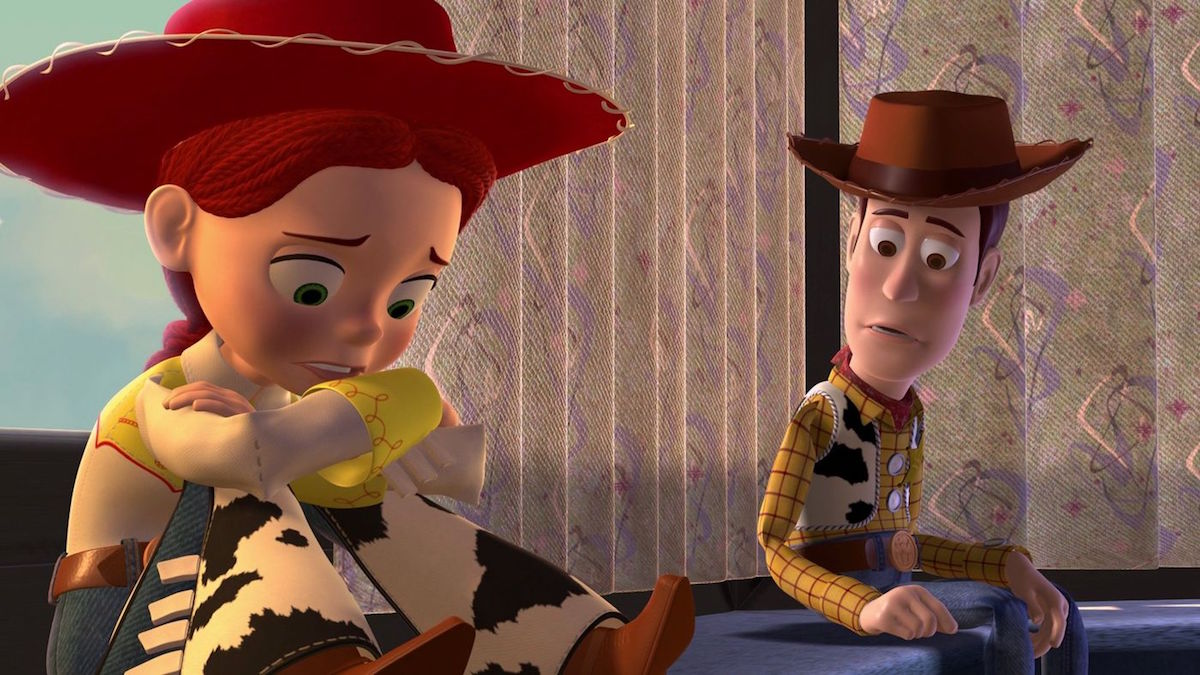
The Emotional Core
The film that was salvaged from deletion maintained the “it’s only a sequel” pitch Disney approved of, but a clear problem was still brewing even after disaster had been averted. As with what finally got released, this earlier version of the movie centered on Woody being pursued by a toy collector, but it was also an apparently slighter effort with lower stakes: Woody’s choice to return home to Andy was presented as a given. It was a Disney-Pixar movie after all: of course it would have a happy ending! When the new directors and members of a group from the original Toy Story team, referred to as the “Braintrust,” including Lasseter, and Stanton, as well as writers/animators Pete Docter and Joe Ranft, got a look at how the film was shaping up though… they were less impressed. They looked over the script and realized that it was the stakes that needed to be fixed..
In a one-weekend brainstorming session, they turned the story around, introducing the character of Wheezy the Penguin, originally from Tin Toy Christmas, who would show Woody the dangers of being a broken toy: you could be lost, and forgotten, left behind by the child you loved. They continued that theme by expanding the character of Jessie, who became a powerhouse of a character and a fan favorite, as well as the first female in the series to not serve primarily as a love interest (all respect given to Mrs. Potato Head and the original Bo Peep).
read more: Toy Story 4 – Inside the Most Important Day of Woody’s Life
Jessie’s journey, from beloved to abandoned toy gave Woody a real choice: live a pampered, immortal life inside a toy museum—but without love—or live a beloved life as a child’s plaything while knowing that it will one day end. A choice like that ends up being bittersweet, and while audiences might still trust the Disney happily-ever-after model, there’s a sense of tragedy underscoring even the happy choice that better resonates with other, future Pixar works like Up and Inside Out. Indeed, the loss of a grown-up Andy became the central plot and existential crisis of Toy Story 3.
The decision that made the movie so great, however, ended up meaning that the voice acting and the animation needed to be almost entirely started over, with only nine months left to complete the project. Which makes being able to save the film from deletion bittersweet, eh?
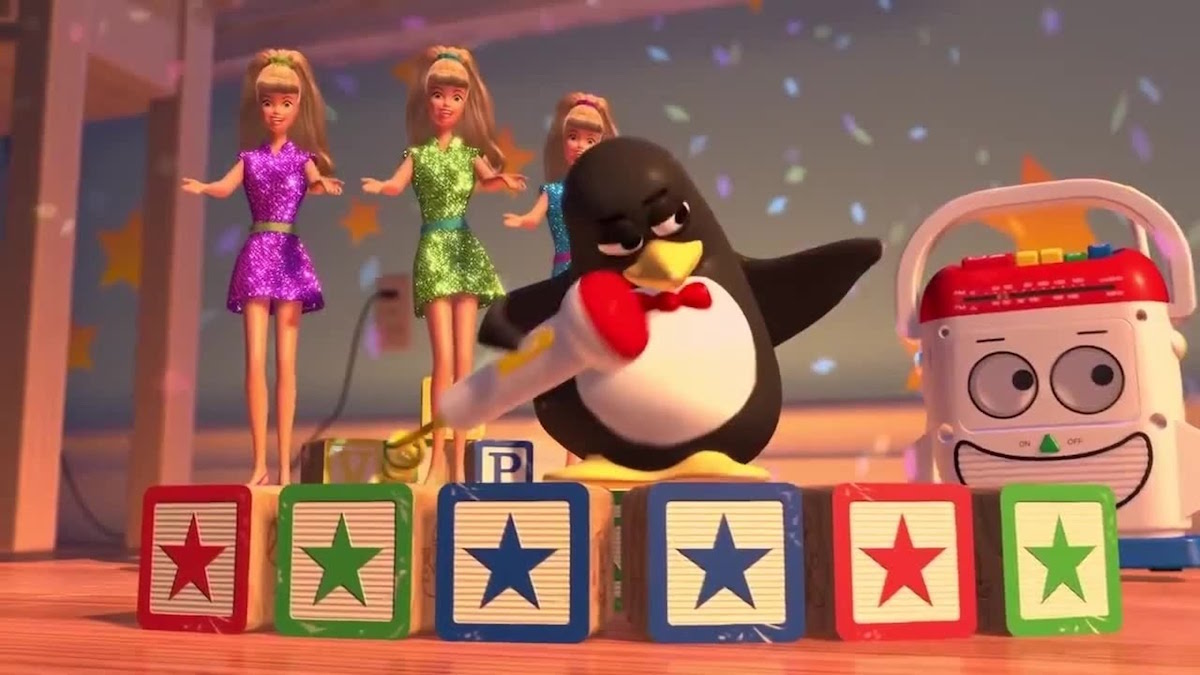
Overworked to Exhaustion
After having to start over, the team on Toy Story 2 worked to the very brink. They were so dedicated to the film that work-life balance was totally eschewed in order to save the project and deliver it to Disney on time. But that overwork had consequences. Not only did the team sneak in as much unauthorized overtime into the project as they could, but their mental and physical health suffered. One Pixar parent believed he had dropped off a child at daycare only to discover he’d left the baby in the back seat of the car. The child was fine, but the team worried tremendously over what might have been had the mistake not been realized.
The team worked shifts that frequently exceeded 10 hours, six days a week. A full 30 percent of the team suffered from repetitive stress injuries or carpal tunnel by the end of the nine months.
Given the hurdles they encountered, Pixar pledged to never recreate the disastrous production schedule they faced with Toy Story 2, but the end result was a film they could be proud of, and that audiences (including me) loved. For viewers who had lamented the first film’s dearth of strong female characters, Jessie was a powerful addition. Her song, Sarah McLachlan’s “When She Loved Me,” is a moving piece, not only about a toy losing her child, but about the end of any close and powerful relationship. Critics and fans alike embraced the film—and it solidified Pixar’s place as an animation giant for years to come.

